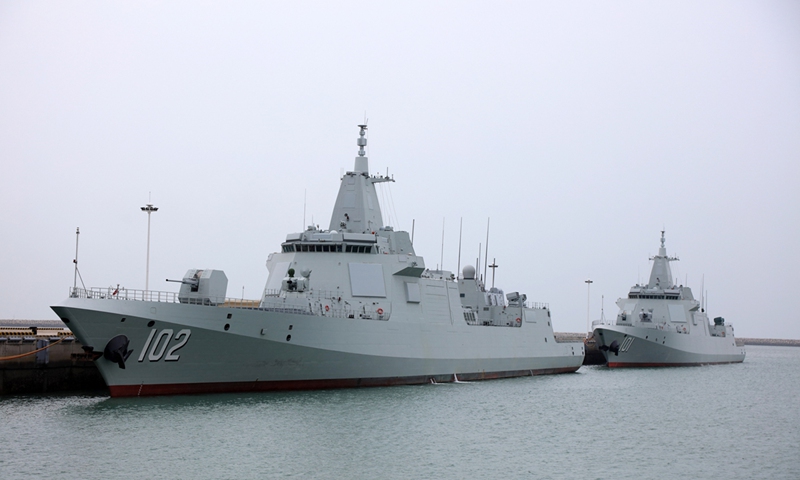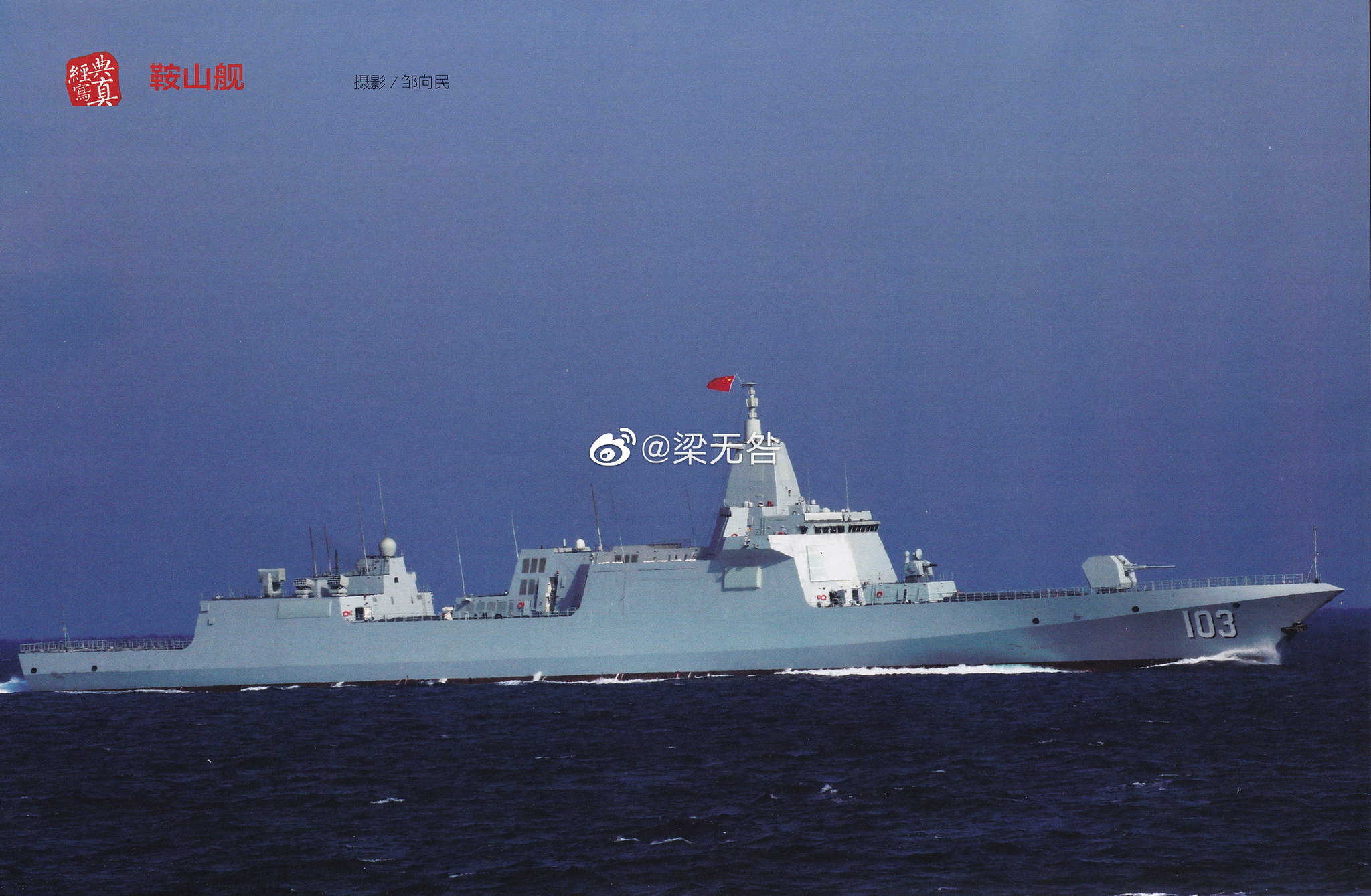Chinese PLA's two newly commissioned large destroyers 'ready for combat' with latest drills
By
Published: Aug 21, 2022 08:08 PM
Two Type 055 large destroyers, the
Nanchang and the
Lhasa, are moored at a naval port in 2021. File photo: Courtesy of the Chinese People's Liberation Army Navy
Two of China's newly commissioned Type 055 10,000 ton-class large destroyers, the
Anshan and the
Wuxi, recently carried out a series of drills involving a wide variety of training objectives, prompting analysts to suggest that the powerful warships are expected to achieve proper combat capability by the end of the year and join their sister ships in island chain-breaking far sea operations like encircling Japan and patrolling near Alaska.
A vessel training center affiliated with the Chinese People's Liberation Army (PLA) Northern Theater Command Navy recently organized a warship flotilla consisting of the
Anshan,
Wuxi and
Baotou to conduct a series of maritime exercises under complex weather conditions for several consecutive days, the PLA Navy said in a press release on Saturday.
The drills featured dozens of training objectives, including maneuvering in formation, formation change, live-fire main gun shooting at both daytime and nighttime against targets at sea and on land, joint air defense, anti-submarine warfare, reconnaissance and counter-reconnaissance, torpedo defense as well as joint search and rescue in coordination with vessel-based helicopters, according to the press release.
The exercises are designed to simulate real battlefield environments, and the training objectives are intended to be difficult, dangerous and complicated, so that the individual warships and the flotilla as a whole can improve, the PLA Navy said.
Both the
Anshan and
Wuxi are Type 055 large destroyers. This ship class has a displacement of more than 12,000 tons, is equipped with 112-cell missile vertical launch units and is endowed with the capability to gain strong situational awareness, making it one of the most powerful warships in the world, analysts said.
The
Baotou, on the other hand, is a Type 052D destroyer, a PLA Navy utility destroyer considered to be comparable to the US' Arleigh Burke-class destroyer.
All three ships were announced to have entered service with the PLA Navy around April 23 this year, the 73rd anniversary of the founding of the PLA Navy.
Judging from official media reports covering the progress of the ships' training since their commissioning, they will likely achieve initial operational capability within this year, a Chinese military expert who requested anonymity told the Global Times on Sunday.
The complexity of the training courses is becoming increasingly realistic and combat oriented, and applying the experience gained by previous warships of the same classes will also accelerate the process, the expert said.
The continued commissioning and capability forming of warships, particularly the Type 055s, will contribute to the PLA Navy's combat capabilities, analysts said.
Both the
Nanchang and the
Lhasa, the first two Type 055 large destroyers, have conducted far sea exercises that broke the first island chain. The
Nanchang reportedly
in 2021, and the
Lhasa reportedly
in June this year.
The
Anshan and
Wuxi are expected to follow the
Nanchang and the
Lhasa in similar missions once they reach operational capability, observers said.
In addition to the above-mentioned four Type 055s in service with the PLA Northern Theater Command Navy, two more Type 055s, the Dalian and the Yan'an, are reportedly in service with the PLA Southern Theater Command Navy, taking the total number of Type 055 in service to six.


